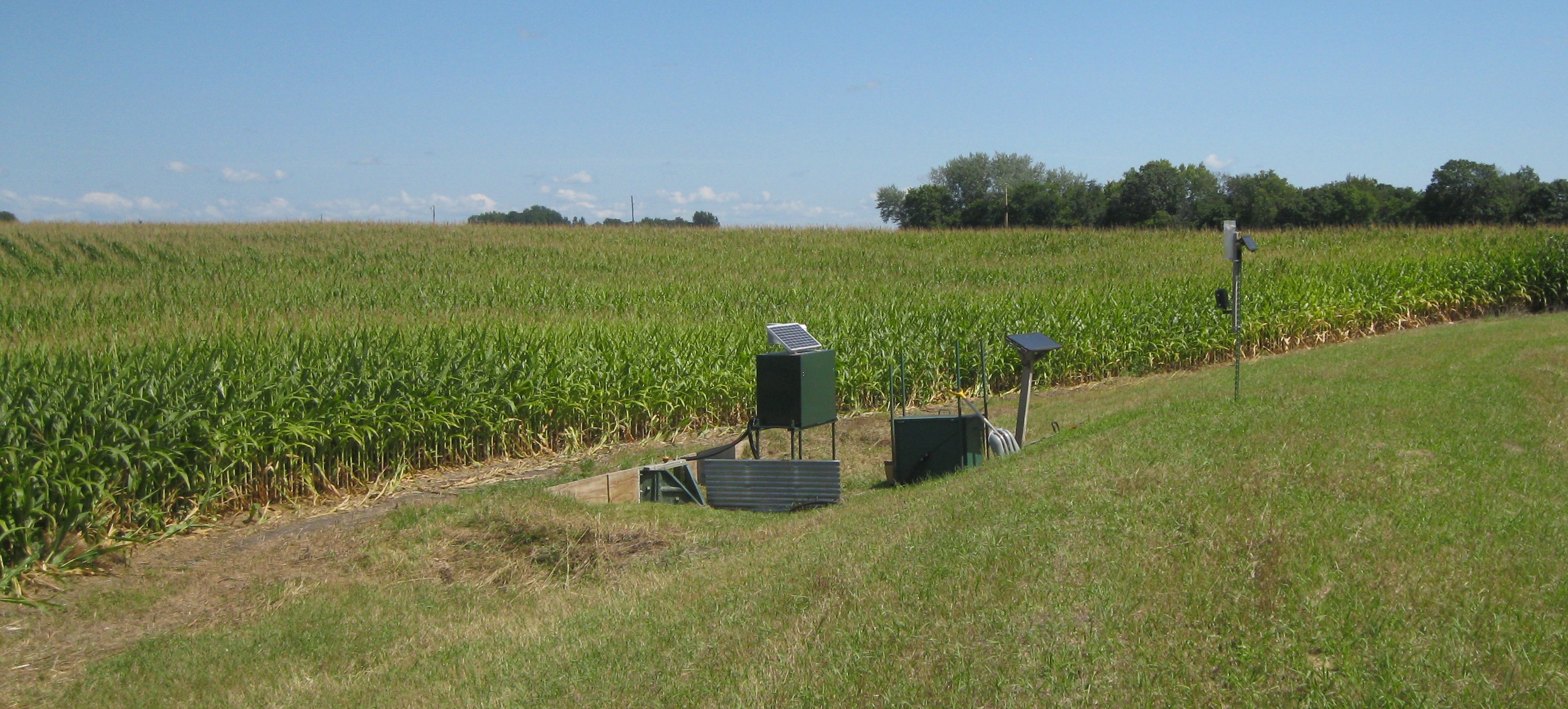Edge-of-field monitoring conducted by the Discovery Farms – Minnesota program can help identify connections between farming practices and economic and environmental concerns. Measurement of nitrate-nitrogen in surface runoff at the field edge in the spring of 2015 provides an example of the importance of good nitrogen application practices.
Over 100 site years of surface water monitoring at 25 locations shows that nitrate-nitrogen losses via surface water typically range from 0.05-5.93 mg/L. This spring, analysis of water leaving the field via surface flow at one location was much higher in nitrate-nitrogen than surface water from other monitored fields, and higher than from this field in previous years. Was there a reasonable explanation?

For this field, urea had been broadcast to the soil surface of harvested soybean stubble in late November of 2014 after the soil temperature had dropped below 50°F. This is a suggested time for application in the fall. However, there was no incorporation in the fall. There was little breakdown of the urea after fall application to spring snowmelt, as nitrate nitrogen concentrations were near the typical range during snowmelt in March. As soil temperatures warmed in the spring the breakdown of the fall broadcast urea accelerated. A field cultivator pass prepared the seedbed for corn planting, but this shallow incorporation still resulted in the nitrate-nitrogen produced from the breakdown of urea remaining close to the soil surface. Surface runoff caused by spring rains in May and June then carried a portion of the nitrogen away, resulting in potential economic loss for the farmer and potential environmental concerns.
While nitrate nitrogen concentrations (mg/L) were elevated, the total amount of nitrate nitrogen (lb/ac) was well within typical ranges seen for other Discovery Farms sites. This was because the low amount of runoff in 2015. However, if runoff amounts were closer to average in 2015, large total losses would have been experienced.
The University of Minnesota’s Best management practices for nitrogen use in south-central Minnesota recommend spring applications of urea with incorporation to a depth greater than 3 inches. Fall applications of urea are acceptable if a nitrification inhibitor is used, urea is incorporated to a minimum depth of 3 inches, and application occurs after soil temperatures are below 50°F. When these practices are not followed, there could be loss of nitrate-nitrogen with surface runoff leaving the field. Results from the Discovery Farms measurements confirm that these management practices are important and necessary to reduce both economic and environmental risk.
More information on nitrogen best practices can be found at: http://www.extension.umn.edu/agriculture/nutrient-management/nitrogen/
- Lessons Learned from Schafer Farms – Implementing Conservation in a Rolling Landscape - April 8, 2020
- What happened to spring? - July 15, 2019
- Tile flow and nutrient movement in Northwest Minnesota - September 13, 2018
